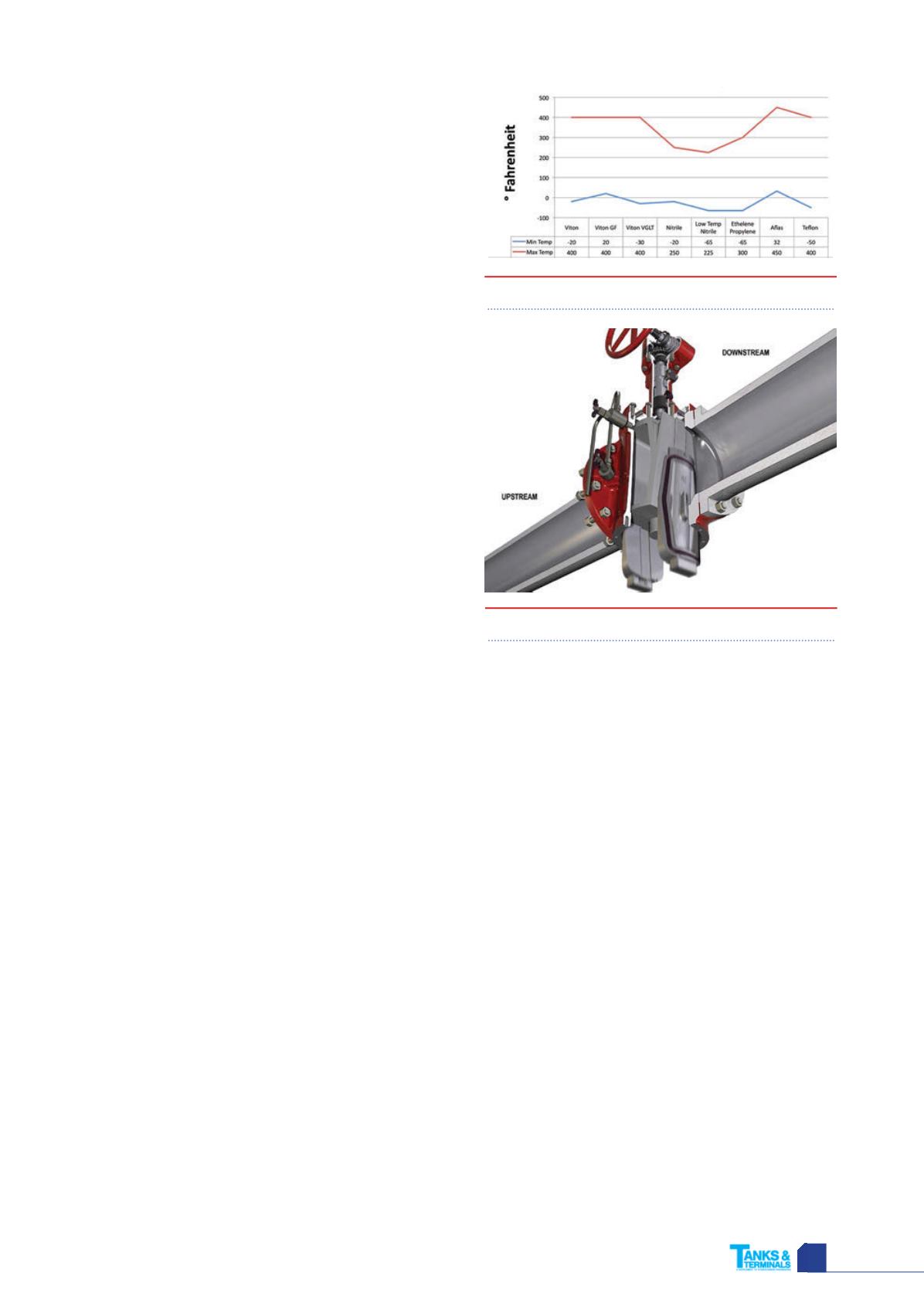
HYDROCARBON
ENGINEERING
53
important to note that even slight variations in
temperature due to the sun exposure or ambient thermal
fluctuations may cause a drastic rise in body cavity
pressure. Valves filled with fuel oil in a laboratory setting
have exhibited a 75 psi increase in pressure with a
temperature rise of only 1˚F (-17˚C). Results may vary
under actual service conditions (depending on media,
pressure vessel rigidity, and the presence of entrained gas)
and it is known that dangerously high pressures will build
up in liquid filled positive shutoff valves. Due to thermal
expansion, API 6D mandates that all DBB plug valves in
liquid service be fitted with an over pressure thermal
relief protection system.
The thermal relief system will pull double duty and
act as the spool piece valve. Each system will have a
manual access valve connected to the valve cavity for
verification of a positive seal. When the plug valve is in
the closed position, simply open the valve cavity access
valve, a small amount of product will be released and
then stop. Once the product flow stops, the valve is
considered double blocked and drop tight sealed.
There are many variations of thermal relief systems.
The three most common are: manual bleed valve,
differential thermal relief system, and automatic body
bleed valve.
n
Manual body bleed valve (MBBV) is the simplest of all
relief systems. A MBBV is connected directly to the
cavity and will allow immediate local evaluation of
seat integrity, however, this design will not provide
protection against cavity pressure build up. The MBBV
must be closed before the DBB plug valve is
reopened.
n
A differential thermal relief (DTR) system is an
integrated self relieving system. The DTR system has
an inline check valve that opens at most
manufacturers’ set pressure of 25 psi. The check valve
will open when the main valve is closed and the
cavity pressure reaches 25 psi above upstream
pressure. The system only functions when the plug
valve is in the closed position and the seats are sealed
drop tight.
n
An automatic body bleed system (ABBV) is an
automatic relief system that is actuated mechanically
to crack open when the main valve is closed. The
ABBV allows for immediate visual inspection of the
seat integrity and also prevents thermal pressure
buildup in the body cavity. This system is open to the
atmosphere when the main valve is in the closed
position, therefore it is recommended that a recovery
system is attached to an ABBV to capture any leakage.
When the main valve is in the open positon, the ABBV
will automatically close by a combination of line
pressure and the loaded spring in the bleed valve.
It is important to note that a functioning thermal
relief system is important to a properly functioning DBB
plug valve. A non-functioning thermal relief system can
have negative effects on valve functionality. Excess cavity
pressure may cause stress to pressure containing
components including causing fatigue to the fasteners. In
addition, valve open operation torque will increase which
may cause damage to drivetrain components. This is
especially true when auxiliary actuation is utilised to
operate the valve. The fast and constant operation of
actuation will spike the body cavity pressure before the
seats are fully retracted from the body, which may lead
the actuator to go into over torque mode to overcome
the momentary torque increase.
The thermal relief systems discussed in this article are
examples of the most common configurations; it is not
uncommon for an end user to design their own thermal
relief system. In these cases, it is recommended that an
end user design be either installed by the valve
manufacturer or, at a minimum, be reviewed by the valve
manufacturer to ensure the end user’s design meets
minimum functionality requirements to protect the valve
and user from excessive cavity pressure.
Inline reparability
DBB plug valves have the ability to be repaired while
inline. The seating segments are simply extracted from the
top or bottom of the valve. In most cases simple hand
tools are all that is needed to change the seating
segments.
Valve design requirements
There are many considerations to take into account when
deciding if a DBB plug valve will meet the process
requirements. Earlier in the article, we discussed valve
operation, features, and typical tank and terminal
applications. There are other design requirements that
need consideration.
Figure 3.
Elastomer temperature range.
Figure 4.
Inline reparation.


